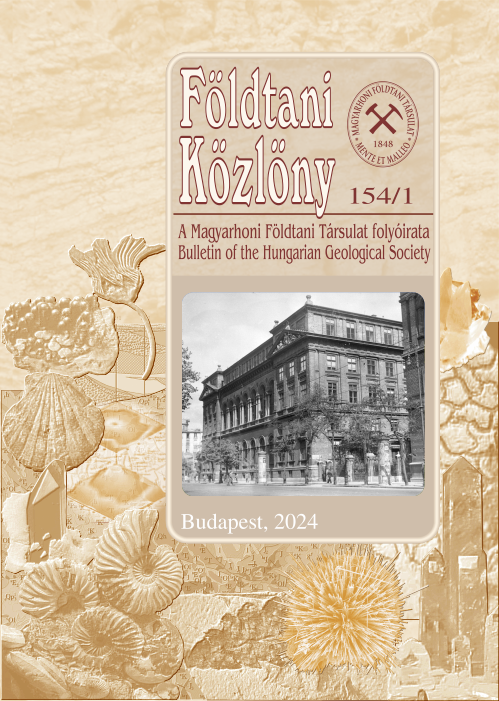The third river - Analysis of Pleistocene fluvial sediments using UHR seismic sections at the River Tisza, from Tiszadob to Martfű
Abstract
The nearly 200 km long UHR single channel seismic section examined in 1995 on the River Tisza
reaches from Tiszadob to Martfű. This examination provided a detailed image of the 10-20 m thick
deposit under the recent riverbed of the Tisza, with a resolution of 0.5 m horizontally and 0.1 m vertically.
The deposits can be classified into three groups by their geometry:
Bundles of mostly horizontal, parallel, weak to strong reflections can be interpreted as vertically
accreted silty and clayey overbank deposits, in which somé stronger reflectors indicate that the sand
sheets spread over on the floodplain during floods. The thickness of the floodplain deposits can reach
10-15 m.
Inclined strata sets can be seen, these are 3-4 km long and approximately at the same depth of 21-25
m in the investigated area. The 5-8 m thick series of inclined reflections with alternating (1-4°) dip angles
above fiat or uneven or repeatedly incised erosion surfaces could have been produced by lateral
accretion of a pointbar of an ancient meandering river. Channel parameters of the primeval stream can
be estimated by using the thickness of inclined strata sets, the dip angle and the length of the reflections.
The average depth of the channel was 5-8 m, the apparent width was 200-300 m and the bankful
discharge has been estimated about 700-800 m3
/s.
The trough-shaped, converging reflections inclining upwards to the edges connected with erosional
surfaces or inclined strata sets are mostly subsequent infill of cut-off channels or oxbow lakes. The sizes
of the channel-fills - average width and depth are 150-200 m and 5-8 m respectively - alsó can alsó be
taken into consideration when as estimating the size and discharge of the ancient river. Comparing the
calculated parameters of the ancient river to the Tisza, a good correspondence is found.
The interpreted seismic sections prove that an ancient stream - approximately with size and discharge
close to the recent one - meandered in the recent valley of the Tisza during the Late Pleistocene. This
concept fits into the Late Pleistocene three-axis drainage system palaeohydrography model of the
Pannonian Basin. According to this theory when the palaeo-Tisza was flowing in the area of BerettyóÉrmeilék and the palaeo-Danube crossed the Duna-Tisza Interfluve, there existed a relatively big, third
river with a large discharge and it meandered in the Tokaj-Szolnok elongated depression.











